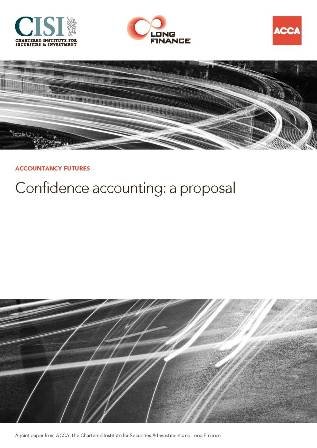Authors
Ian Harris, Professor Michael Mainelli and Jan-Peter Onstwedder
Published by
Association of Chartered Certified Accountants (ACCA), Long Finance & The Chartered Institute for Securities & Investment (CISI) July 2012, 63 pages.
Share on social media:



Confidence Accounting: A Proposal
Confidence Accounting is a proposal to use distributions, rather than discrete values, where appropriate in auditing and accounting. In a world of Confidence Accounting, the end results of audits would be presentations of distributions for major entries in the profit & loss, balance sheet and cashflow statements. The proposed benefits of Confidence Accounting include a fairer representation of financial results, reduced footnotes, more measurable audit quality and a mitigation of mark-to-market perturbations. The landmark, free-to-download report was published on 5 July 2012 (press release).
Andy Haldane, Executive Director for Financial Stability at the Bank of England welcomes the proposal and writes in the foreword, “My hope is that this proposal moves our thinking a step closer towards a set of accounting standards for major entities that put systemic stability centre stage. In the light of the crisis, anything less than a radical re-think would be negligent.”
Responses to the July 2012 report are available online. The publication included a invitation to readers to comment on the content of the proposal. A questionnaire was circulated during events and was also available online. Read the Confidence Accounting Consultation Responses for more information.
For a quick introduction to Confidence Accounting, particularly its application to banking, in 2011 the CISI published “Accounting for Confidence” which provides a short overview. Confidence Accounting was introduced for the non-professional in “The Price of Fish: A New Approach to Wicked Economics and Better Decisions”, winner of the 2012 Independent Publisher Book Awards Finance, Investment & Economics Gold Prize.




